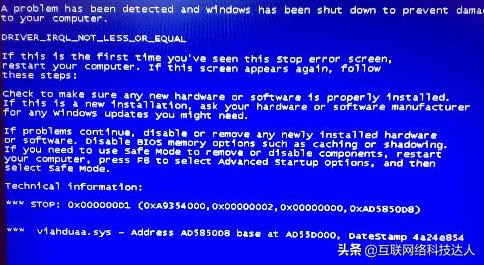java常用类-字符串String类(java常用类-字符串String类)
字符串的学习,有的同学就看看API,记下方法,有的同学看看源代码,还有的同学画画图,自然学的深度是不一样的。
|
/** * The {@code String} class represents character strings. All * string literals in Java programs, such as {@code "abc"}, are * implemented as instances of this class. * <p> * Strings are constant; their values cannot be changed after they * are created. String buffers support mutable strings. * Because String objects are immutable they can be shared. For example: * <blockquote><pre> * String str = "abc"; * </pre></blockquote><p> * is equivalent to: * <blockquote><pre> * char data[] = {'a', 'b', 'c'}; * String str = new String(data); * </pre></blockquote><p> * Here are some more examples of how strings can be used: * <blockquote><pre> * System.out.println("abc"); * String cde = "cde"; 4、字符串对象是如何存储的 字符串常量存储在字符串常量池,目的是共享 字符串非常量对象存储在堆中。
5、String的拼接
结论: 常量与常量的拼接结果在常量池 只要其中有一个是变量,结果就在堆中 如果拼接的结果调用intern()方法,就在常量池中
6、String对象的比较 ==比较的是地址。 equals比较的是字符串的内容,重写了Object的equals方法。
1、常用方法系列之一 l int length():返回字符串的长度: return value.length; l boolean isEmpty():判断是否是空字符串:return value.length == 0; l String toLowerCase():使用默认语言环境的规则将此 String 中的所有字符都转换为小写。 l String toUpperCase():使用默认语言环境的规则将此 String 中的所有字符都转换为大写。 l String trim():返回字符串的副本,忽略前导空白和尾部空白。 l boolean equals(Object obj):比较字符串的内容 l boolean equalsIgnoreCase(String anotherString):与equals方法类似,忽略大小写 l String concat(String str):将指定字符串连接到此字符串的结尾。 等价于用“ ” 2、String类和字符相关操作 l char charAt(int index): 返回某索引处的字符return value[index]; l char[] toCharArray():将此字符串转换为一个新的字符数组 l String(char[] value):分配一个新的 String,使其表示字符数组参数中当前包含的字符序列。 l String(char[] value, int offset, int count):分配一个新的 String,它包含取自字符数组参数一个子数组的字符。 3、String类字节与字符串操作方法 编码:把字符-->字节 l byte[] getBytes():使用平台的默认字符集将此 String 编码为 byte 序列,并将结果存储到一个新的 byte 数组中。 l byte[] getBytes(charset charset) :使用给定的 charset 将此 String 编码到 byte 序列,并将结果存储到新的 byte 数组。 l byte[] getBytes(String charsetName) :使用指定的字符集将此 String 编码为 byte 序列,并将结果存储到一个新的 byte 数组中。 解码:把字节-->字符 l String(byte[] bytes) :通过使用平台的默认字符集解码指定的 byte 数组,构造一个新的 String。 l String(byte[] bytes, Charset charset):通过使用指定的 charset 解码指定的 byte 数组,构造一个新的 String。 l String(byte[] bytes, int offset, int length) :通过使用平台的默认字符集解码指定的 byte 子数组,构造一个新的 String。 l String(byte[] bytes, int offset, int length, Charset charset):通过使用指定的 charset 解码指定的 byte 子数组,构造一个新的 String。 l String(byte[] bytes, int offset, int length, String charsetName):通过使用指定的字符集解码指定的 byte 子数组,构造一个新的 String。 l String(byte[] bytes, String charsetName):通过使用指定的 charset 解码指定的 byte 数组,构造一个新的 String。 4、String类判断是否以指定内容开头或结尾 l boolean endsWith(String suffix):测试此字符串是否以指定的后缀结束。 l boolean startsWith(String prefix):测试此字符串是否以指定的前缀开始。 l boolean startsWith(String prefix, int toffset):测试此字符串从指定索引开始的子字符串是否以指定前缀开始。 5、String类字符串查找操作 l boolean contains(CharSequence s):当且仅当此字符串包含指定的 char 值序列时,返回 true。 l int indexOf(int ch):返回指定字符在此字符串中第一次出现处的索引。 l int indexOf(int ch, int fromIndex):返回在此字符串中第一次出现指定字符处的索引,从指定的索引开始搜索。 l int indexOf(String str):返回指定子字符串在此字符串中第一次出现处的索引。 l int indexOf(String str, int fromIndex):返回指定子字符串在此字符串中第一次出现处的索引,从指定的索引开始。 l int lastIndexOf(int ch):返回指定字符在此字符串中最后一次出现处的索引。 l int lastIndexOf(int ch, int fromIndex):返回指定字符在此字符串中最后一次出现处的索引,从指定的索引处开始进行反向搜索。 l int lastIndexOf(String str):返回指定子字符串在此字符串中最右边出现处的索引。 l int lastIndexOf(String str, int fromIndex):返回指定子字符串在此字符串中最后一次出现处的索引,从指定的索引开始反向搜索。 indexOf和lastIndexOf方法如果未找到都是返回-1 6、String类字符串截取操作 l String substring(int beginIndex) 返回一个新的字符串,它是此字符串的从beginIndex开始截取到最后的一个子字符串。 l String substring(int beginIndex, int endIndex) 返回一个新字符串,它是此字符串从beginIndex开始截取到endIndex(不包含)的一个子字符串。 7、String类是否匹配正则 l boolean matches(String regex):告知此字符串是否匹配给定的正则表达式。
8、String类替换操作 l String replace(char oldChar, char newChar): 返回一个新的字符串,它是通过用 newChar 替换此字符串中出现的所有 oldChar 得到的。 l String replace(CharSequence target, CharSequence replacement): 使用指定的字面值替换序列替换此字符串所有匹配字面值目标序列的子字符串。 l String replaceAll(String regex, String replacement): 使用给定的 replacement 替换此字符串所有匹配给定的正则表达式的子字符串。 l String replaceFirst(String regex, String replacement): 使用给定的 replacement 替换此字符串匹配给定的正则表达式的第一个子字符串。
9、String类字符串拆分操作 l String[] split(String regex):根据给定正则表达式的匹配拆分此字符串。 l String[] split(String regex, int limit):根据匹配给定的正则表达式来拆分此字符串,最多不超过limit个,如果超过了,剩下的全部都放到最后一个元素中。
往期精彩内容: Java常用类_包装类Wrapper Java开发中常用的消息队列工具 ActiveMQ html中的元素类型种类及特点 使用QueryRunner类实现更新 英语不好照样可以搞定Java编程—Java常用英语汇总 ,免责声明:本文仅代表文章作者的个人观点,与本站无关。其原创性、真实性以及文中陈述文字和内容未经本站证实,对本文以及其中全部或者部分内容文字的真实性、完整性和原创性本站不作任何保证或承诺,请读者仅作参考,并自行核实相关内容。文章投诉邮箱:anhduc.ph@yahoo.com 热门推荐
排行榜
|











